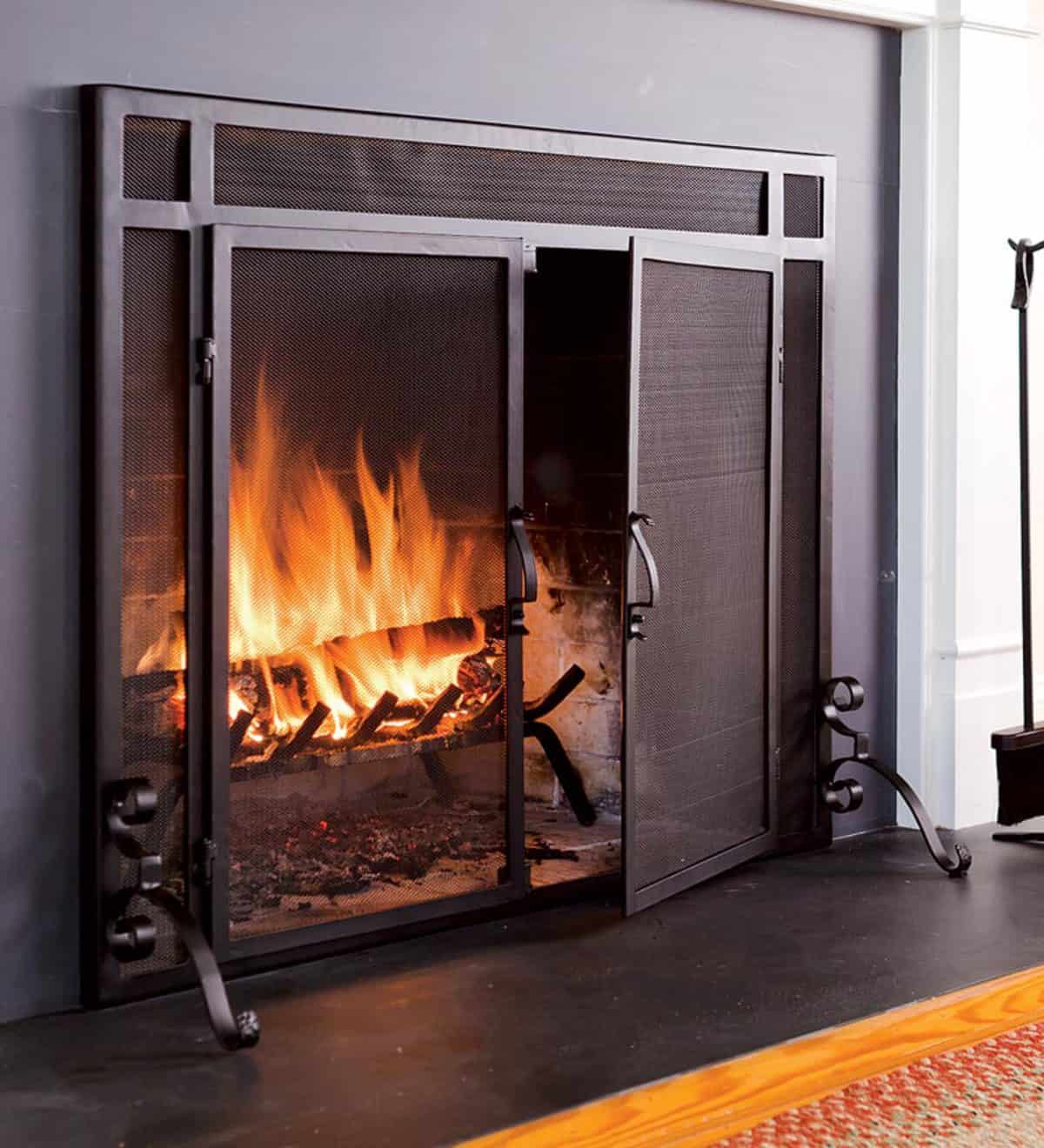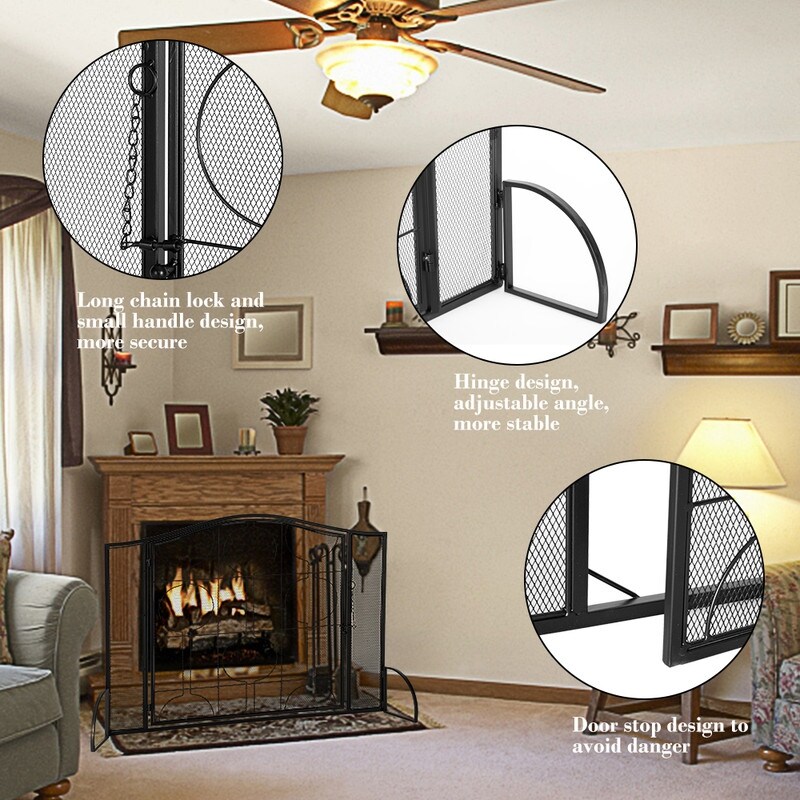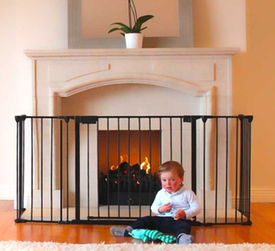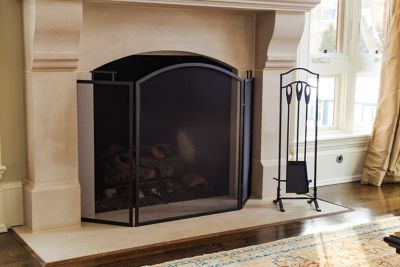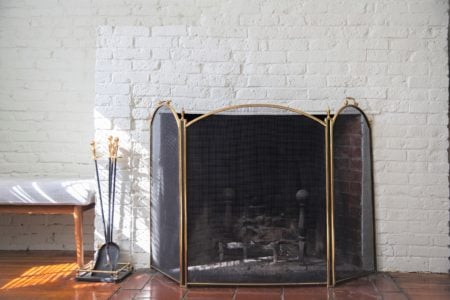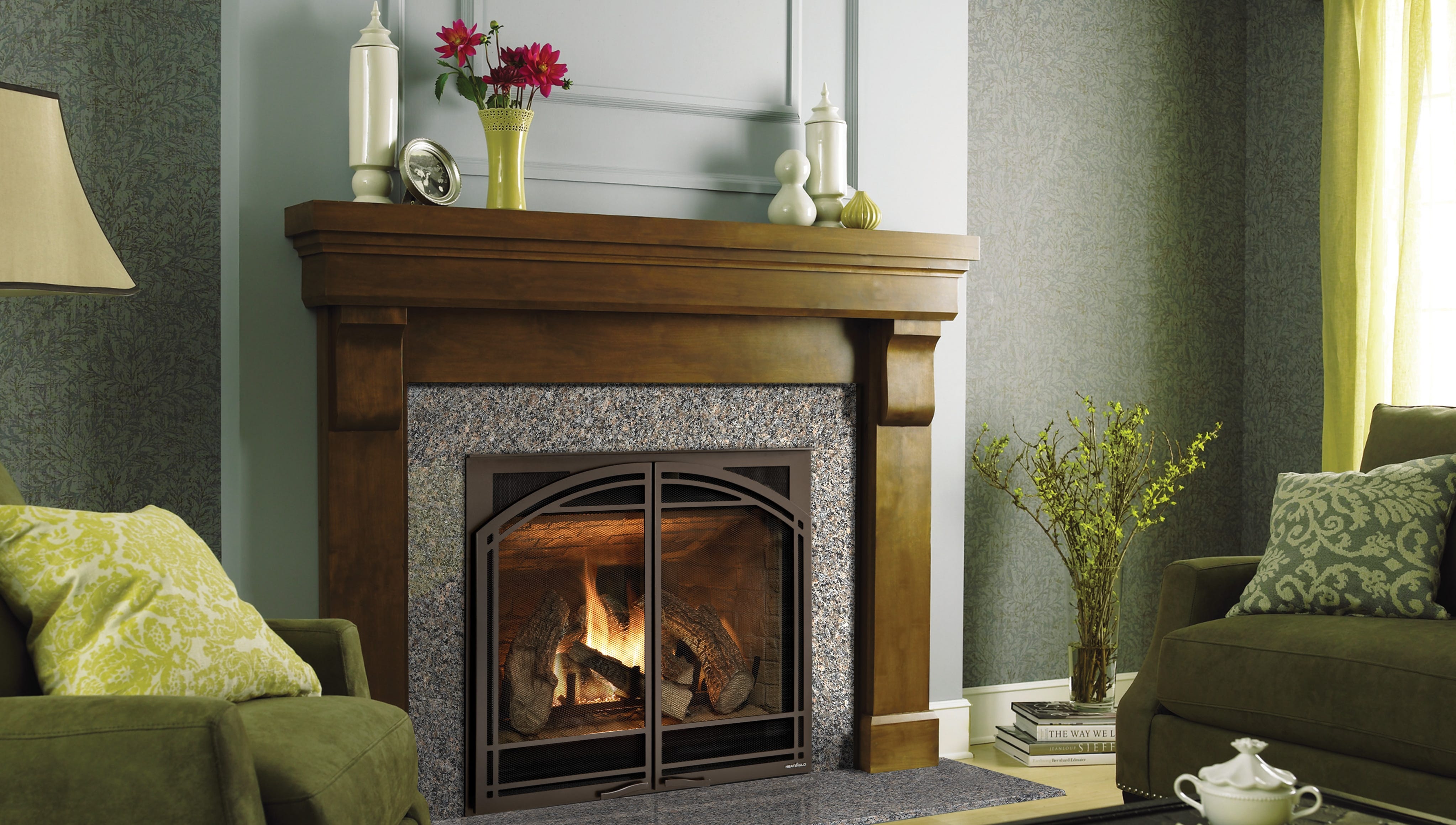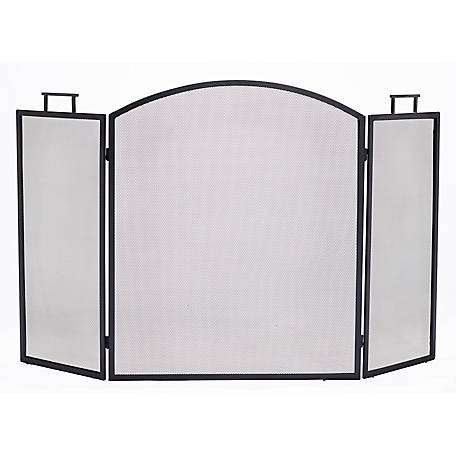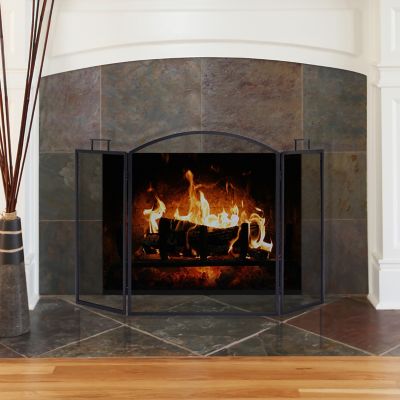A fireplace screen lock provides crucial protection by securing the barrier between your living space and the fire’s intense heat. These specialized locking mechanisms prevent accidental screen displacement that could allow sparks to escape or children and pets to access dangerous areas. Modern designs combine safety with aesthetics, offering various locking styles to match different screen types and home decor preferences. From simple magnetic catches to more substantial bolt systems, fireplace locks accommodate various risk levels and user needs. Properly installed locks give homeowners peace of mind while maintaining easy access for fireplace maintenance and operation. Understanding the options and installation requirements helps create a safer environment without compromising the fireplace’s functionality or visual appeal.
Types of Fireplace Screen Locks
Magnetic locks offer simple yet effective security for lightweight screens. These systems use powerful rare-earth magnets embedded in both the screen frame and fireplace surround, creating a firm but releasable connection. The magnets automatically engage when the screen closes, requiring deliberate force to open. This design works well with flat-screen models and provides child-resistant protection without complicated mechanisms. Most magnetic locks maintain their hold even when bumped, but release easily when proper opening pressure is applied.
Bolt-action locks provide more robust security for heavier screens or high-risk households. These mechanical systems feature a sliding or rotating bolt that physically anchors the screen to the fireplace frame. Some versions incorporate keys for adult-only access, while others use simple latches that children can’t easily manipulate. Bolt locks typically mount on the screen’s side or bottom edges, with the receiving bracket attaching to the brick or stone hearth. Their visible presence often serves as a psychological deterrent to curious children.
Decorative locking handles combine safety with aesthetic appeal for traditional fireplace setups. These ornate metal pieces function both as gripping points and locking mechanisms, often featuring twist-to-lock designs. Many replicate historical hardware styles that complement period homes while providing modern safety standards. The locking action usually involves aligning and turning decorative elements to engage hidden securing pins. These locks tend to be more visible than other types, making them ideal for homeowners who appreciate visible craftsmanship.
Measuring for Proper Lock Fit
Accurate measurements ensure the lock system fits your specific screen and fireplace configuration. Start by determining the overlap between the screen frame and fireplace opening where the lock will mount. Most locks require at least 1 inch of flat surface for secure attachment. Note whether your screen sits flush against the fireplace face or has a recessed position, as this affects lock selection.
Measure the gap between the screen and the fireplace when closed; some locks need specific clearances to function properly. Check for obstructions like raised hearths or protruding brickwork that might interfere with lock operation. Document the screen material (metal, glass, mesh) and thickness at potential mounting points, as these factors determine appropriate fasteners.
Consider the screen’s movement pattern, whether it swings, slides, or lifts off, when choosing lock placement. Swinging screens typically benefit from side-mounted locks, while lift-off designs need bottom-mounted solutions. If the screen has multiple panels, decide whether to secure each section or just the primary access point. These details help select a lock that integrates seamlessly with existing components.

Installation Process and Tools Needed
Most fireplace screen locks install easily with basic household tools. Common requirements include a drill with masonry bits (for brick or stone), screwdrivers, measuring tape, and possibly a level. Magnetic systems often come with self-adhesive backing for tool-free installation, though adding screws increases permanence. Always clean mounting surfaces thoroughly with rubbing alcohol before applying any adhesive or drilling holes.
For bolt-action locks, begin by marking drill points using the included template or the lock’s base as a guide. Drill pilot holes slightly smaller than the provided screws to ensure tight threading in metal screens. When mounting to masonry, use appropriate wall anchors to prevent loosening over time. Test the lock mechanism before final tightening to confirm proper alignment and smooth operation.
Decorative locks may require more careful positioning to maintain visual balance. Use painter’s tape to temporarily hold pieces in place while evaluating appearance and function. Some ornate designs need periodic lubrication at moving parts—check manufacturer recommendations. Always install locks according to the included instructions, as improper placement can reduce effectiveness or damage components.
Child Safety Considerations
Fireplace screen locks serve as vital layers of protection in homes with young children. Choose locks that require dual-action or complex motions beyond a toddler’s capabilities—think push-and-turn rather than simple latches. Magnetic systems should have sufficient strength to resist a child’s pulling force (typically 5+ pounds of resistance). Position locks at adult waist height when possible, making them harder for small hands to reach.
Educate children about fireplace dangers while still relying on physical barriers. Explain that the locked screen is never to be touched, but don’t depend solely on verbal warnings. Consider supplementing locks with safety gates for particularly curious toddlers. Periodically test your locks by attempting to open them with minimal force to ensure they haven’t loosened over time.
For households with special needs individuals, explore adaptive locking solutions. Some manufacturers offer keyed locks with emergency quick-release features or alarms that sound when the screen moves. Document lock locations and operation methods for all caregivers to ensure consistent protection. Regularly inspect locks for wear that could compromise safety.
Maintenance and Troubleshooting
Routine maintenance keeps fireplace locks functioning properly through seasons of use. Clean magnetic surfaces monthly with a soft cloth to remove dust and soot that could weaken attraction. Check screw tightness on mechanical locks every few months, as heat cycling can loosen fasteners. Apply high-temperature lubricant sparingly to moving parts if they become stiff or noisy.
Common issues include weakened magnetic strength over time or sticking bolts. For magnetic systems, replace the magnetic strips if they no longer hold firmly—these are often available as separate components. Sticking bolts may need debris removal from their channels or slight adjustment of their mounting alignment. Never force a stuck lock, as this can bend components and worsen problems.
Seasonal changes sometimes affect lock performance due to material expansion. Allow for slight adjustments in winter when metal contracts in cold temperatures. If a lock fails completely, replace it immediately rather than relying on temporary fixes. Keep spare parts for critical locking systems, especially if you use the fireplace frequently during winter months.
Alternative Security Options
For renters or those unable to modify their fireplace, freestanding locking barriers provide alternative solutions. These standalone gates or panels anchor to adjacent walls without permanent alteration. Some models feature adjustable widths to accommodate various fireplace sizes and include child-resistant latches. While not as seamless as installed locks, they offer comparable protection with greater flexibility.
Heavy screen stabilizers work alongside traditional locks for extra security. These weighted bases or side brackets prevent screen tipping without permanent installation. Some designs incorporate decorative elements like wrought iron scrollwork that enhances the fireplace’s appearance while adding stability. They’re particularly useful for lightweight screens in high-traffic areas.
Smart monitoring systems represent the latest in fireplace safety technology. These wireless sensors alert homeowners if the screen moves unexpectedly or if nearby motion is detected. Some integrate with home security systems to provide comprehensive monitoring. While not physical locks, they add an important layer of awareness, especially for vacation homes or elderly residents.
A quality fireplace screen lock transforms an essential safety feature into a reliable protective system. By selecting the appropriate type for your screen and household needs, you create a safer environment without sacrificing convenience or style. Proper installation and regular maintenance ensure the lock performs as intended through years of use. Whether opting for discreet magnetic systems, visible decorative hardware, or supplemental security measures, the right solution brings valuable peace of mind. Remember that no single precaution eliminates all risk—combine physical locks with safety education and vigilant supervision for comprehensive fireplace protection. With various options available at different price points, every homeowner can find a locking solution that fits their specific situation while keeping the hearth’s welcoming ambiance intact.
Pleasant Hearth Classic 3-Panel Fireplace Screen, FA010S
How to Baby Proof a Fireplace (Step-By-Step Guide)
Gas fireplaces to get screens to prevent burns
Pleasant Hearth Classic 3-Panel Fireplace Screen, FA010S
The Best Childproof Fireplace Screen in 2022: Baby Proof Your
Pleasant Hearth Classic 3-Panel Fireplace Screen, FA010S
Fireplace Door Lock
Related Posts:

